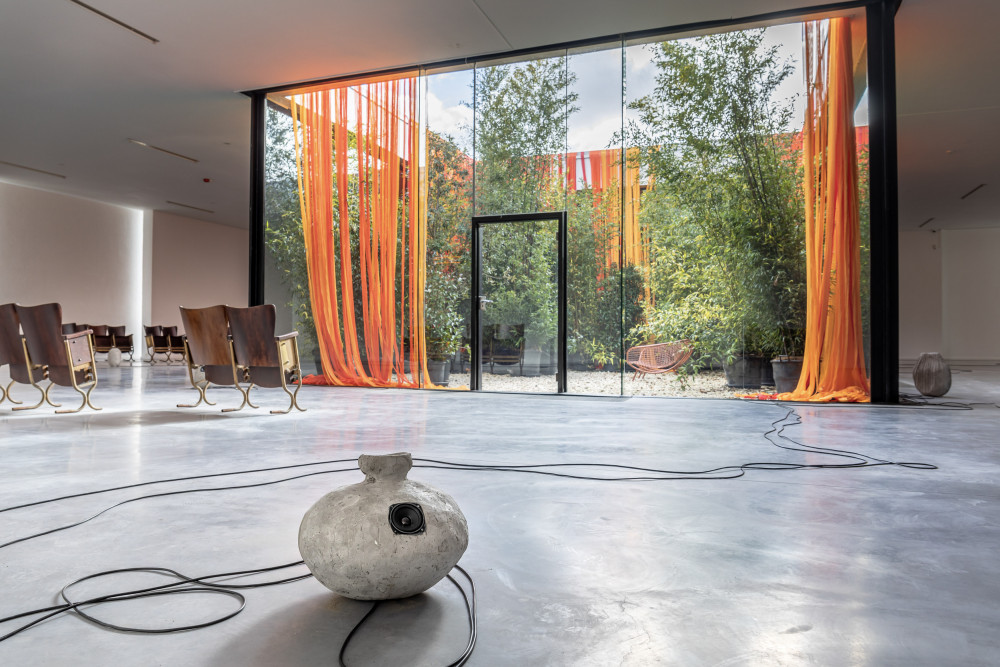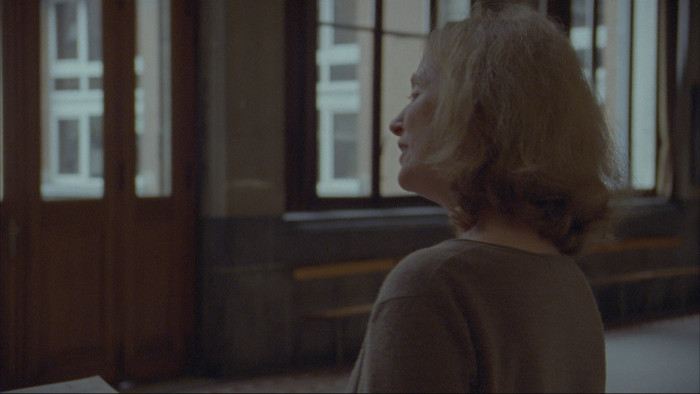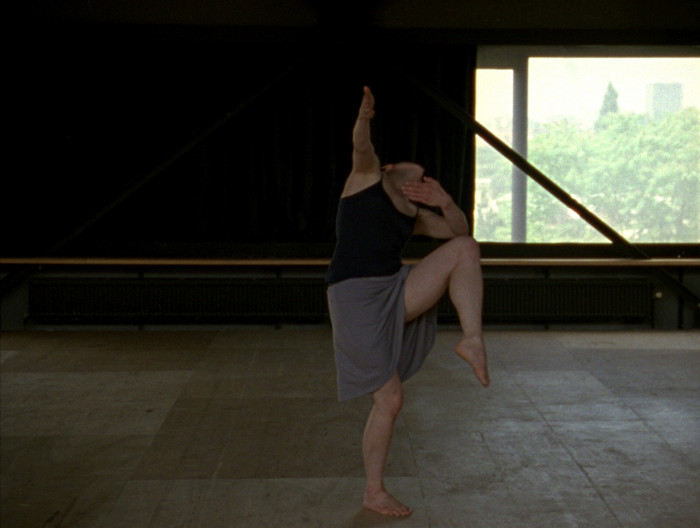Blindsight - In collaboration with Latifa Laâbissi and Laszlo Umbreit
The sound installation Blindsight (2022) finds its source in the soundtrack to Ghost Party (2) (2022), a film made with dancer and choreographer Latifa Laâbissi in the Van Wassenhove house designed by architect Juliaan Lampens in Sint-Martens-Latem. De Boer translated the audio side of the film, composed by Laszlo Umbreit, into an environmental and acoustic experience, originally designed for the main space of the Dhondt-Dhaenens Museum in Deurle, Belgium. The original installation consisted of concrete vases hiding the speakers, theatre seats, bamboo plants and orange and red net bags suspended in the patio of the space.
In the film and in the related performance Ghost Party (1), de Boer and Laâbissi lend their voices to artists and writers who have inspired them. Fragments of texts and dialogues by Marguerite Duras, Serge Daney, Casey, and Eduardo Viveiros de Castro are included. Ghost Party (1) and (2) evoke the relationship to the other and the importance of otherness in the creative process: by reacting to the voices, bodies, and objects that surround us, we can change our perspective and perception. Together, the three works—Blindsight, Ghost Party (1) and (2)—explore the concept of voice: having a voice, giving voice to, and listening to the voices within us.
Sound has always been an important element in de Boer's work, but Blindsight represents a radically new approach: visitors are invited to sit in cinema seats, not to watch a film, but to listen. In Blindsight, listening is the first step in creating a conversation. For the first time, Manon de Boer has staged herself in the film as well as in the performance and sound installation. The artist, who questions the voices that inhabit us, reflects on the inseparable links between interiority and otherness, as well as the necessary dissonances that inhabit all collaboration and exchange
The installation features both the dialogue and the ambient noises taken from the film Ghost Party, however, the spatialisation of the soundtrack breaks the linearity of the film which itself has a beginning and an end. The ambient recordings are played on four speakers which accentuate the tactile presence of the sound, while the voices and text fragments are played on a single speaker. Each monitor is integrated into a concrete vessel that in turn echoes the vases in the film which were used to embody the people to whom de Boer and Laâbissi lent their voices.


